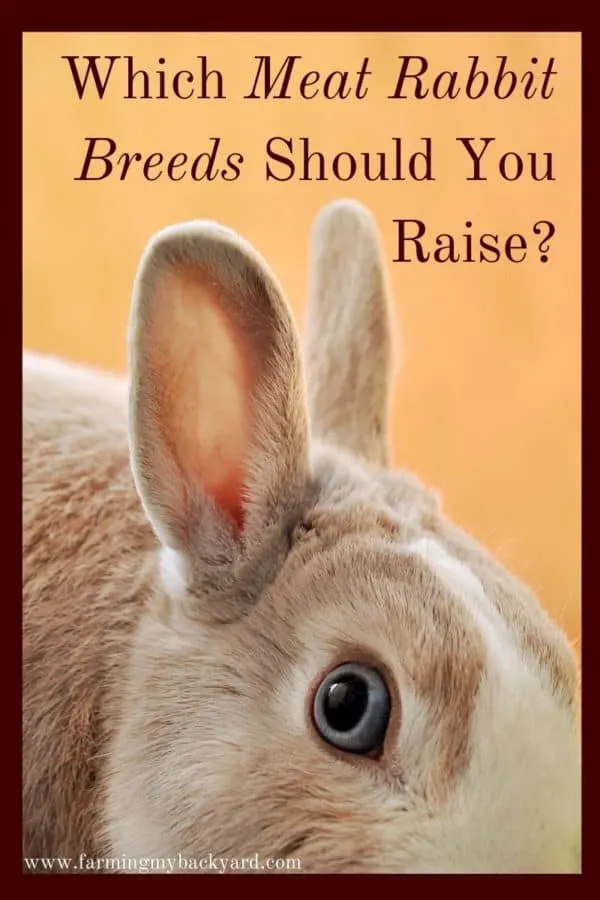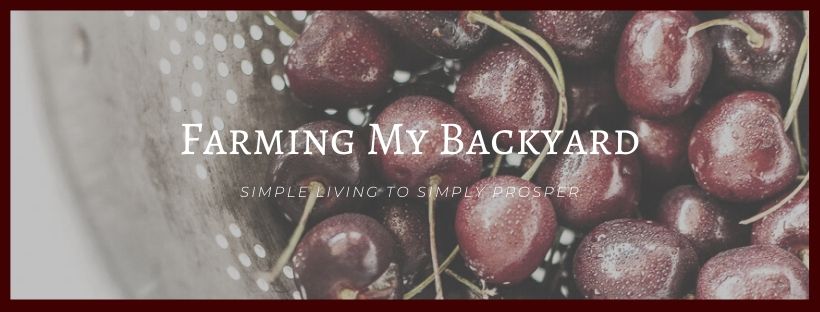Raising your own meat rabbits is one way to increase the efficiency of very small homesteads Just one male and two females can produce enough kits to keep a family quite well supplied. Here are some of the best meat rabbit breeds you can raise.
Any time you are bringing home new livestock, make sure all new comers are healthy. And even if they appear healthy, it’s a good idea to quarantine them for 30 days before introducing them to other animals. Rabbits can carry pasteurella, without showing symptoms and spread it to other rabbits.

Basic signs of health are clear bright eyes and clean fur. Check the rabbit’s feet for injury from wire cages and make sure the teeth aren’t overgrown. Rabbits may sneeze occasionally but a runny nose and excessive sneezing are signs of pasteurella.
7 Good Meat Rabbit Breeds
New Zealand and Californian
The most popular meat rabbit breed is the New Zealand White. These rabbits easily produce multiple litters per year. They reach 9-12 pounds in weight. Some strains can grow very quickly, even reaching reach 8 pounds at 8 weeks! The downside of New Zealands is they can aggressive and don’t make good pets.
Another popular breed is Californians, which are a New Zealand and Chinchilla hybrid. They also grow very quickly and can reach 8-12 pounds by 12 weeks.
Rex and Satin
If you want a breed that is also good for pelts, you may want to consider the Rex or Satin. Rex’s can reach around 10 pounds. Satins are primarily raised for fur, but they dress out decently as meat rabbits and can reach 12 pounds. They are also very cold hardy.
Silver Fox
The Silver Fox is very poplar among small scale breeders because they are good for meat, fur, and make good pets. They can reach 10-12 pounds at three months old. They tend to have medium sized litters of 7-8 kits, and they are considered a threatened breed by The Livestock Conservancy.
Any time you can raise a threatened breed you are helping preserve these animals from extinction. The rise of factory farming and it’s tendency to raise just one or two types of animal has led to possible extinction for many heritage breeds. It is small farmers like you who can save them, just by raising them as they originally were.
American Chinchilla
The breed I have the most personal experience with is the American Chinchilla. These are also on the threatened list. They make lovely pelts and can reach about 9 pounds by 12 weeks. I’ve found them to be good mothers, although they had fewer litters per year than a New Zealand would.
I’ve also found American Chinchilla make great pets. My buck had a wonderful personality and enjoyed spending time with us. (The does were happier left to do their rabbit thing). When we came across a kit of his that shared his same temperament we kept it as a pet. My sister’s rabbit loved tortillas and all men. She was a hoot to have around!
French Angora
If you are really interested in keeping rabbits for angora fiber, you may want to find a breeder who raises French Angora’s as multipurpose. The individual strains will be more important than the breed in this case.
Other Considerations
In preparing this article I noticed that some websites recommend raising Flemish Giants for meat because when full grown they can reach up to 20 pounds. I do not recommend them, because they eat a lot of feed and are less cost effective. They also take a long time to grow to their full size, and are likely to weigh just as much as the smaller breeds at 8 weeks old.
Before buying a rabbit, ask the owner questions about their particular strain. Do they do well in your climate? How often do they breed back, what type of feed do they use? Have they been raised in cages or in a colony? Finding rabbits that are already genetically suited to how you will raise them may be easier than trying to breed those traits into them yourself.
Especially try to find rabbits that are well suited to your climate. Very hot and cold temperatures can be dangerous for rabbits. We did not bring our Oregon rabbits with us to Texas, as they would have been ill suited for the hot summer days.
If you’ve never raised rabbits before, check out Basic Rabbit Care to help you get started.
And make sure to visit our rabbit page for more information on breeding and raising meat rabbits.
Want To Raise Happy Chickens?
Subscribe for our newsletter and get the free email course Intro To Backyard Chickens as well as a free printable checklist to walk you through step by step!

Kris
Thursday 19th of December 2019
The other thing to consider before starting down the Rabbit meat trail, is...can you or someone else in the family do the initial killing of said cute & fluffy rabbit. I think for many, the killing part could be the hard part. But Rabbit meat is good
Kathryn
Friday 20th of December 2019
Yes, that's an absolute necessity. Even if you think you want to hire someone rabbits are so fragile that you may have to put one down due to an urgent situation.